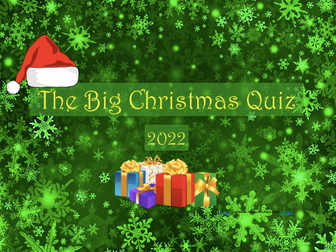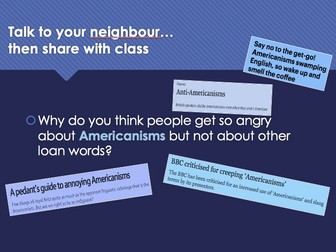
2023 Big Christmas Quiz (Y10-13)
A fun topical, general knowledge and Christmas themed quiz to be played in teams.
11 available rounds: Christmas Crackers, Name That Tune, Music, Science, Books & Art, History, TV & Film, Over The Rainbow, Find the Connection, Geography & Nature. Tie break round (if needed)
The quiz is presented as a PowerPoint with hyperlinks that direct you to each round chosen from the menu and then back to the menu after each round.
Answers to questions are provided in notes pane of PPT. NB - do not display this to class as you are using it!!
Suggested play:
1 Each team devises their team name
2 Start with whole class round (teams confer and write down answers) - suggest Christmas Crackers
Scores recorded on whiteboard at end of each round
Scoring of round 1 determines in which order the teams gets to choose their individual round from the menu (slide 2) - highest or lowest first according to teacher preference.
3 Each team answers their own chosen round verbally. If incorrect or not known, questions are offered to whole class who can earn bonus points by stealing the question (first to raise hand)
4 After each team has particpated, play can return to whole class rounds (written answers) or if there are only 3 or 4 teams, another individual round can be chosen from the menu
5 Final round should be a whole class round chosen by the teacher
6 If there is a tie, use the tie break round
The quiz is presented as a PowerPoint with hyperlinks that direct you to each round chosen from the menu and then back to the menu after each round.
This was devised for sixth formers but can be played by bright groups from Year 10 upwards.


